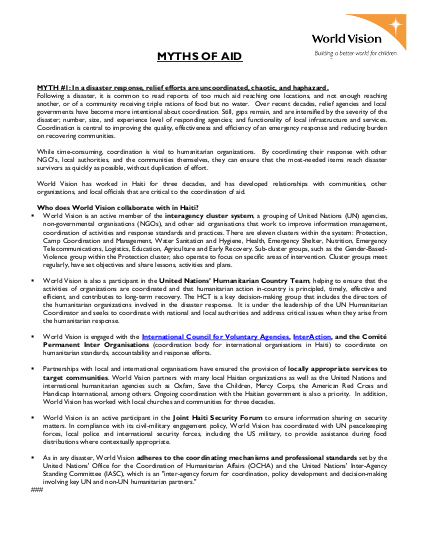
Following a disaster, it is common to read reports of too much aid reaching one locations, and not enough reaching another, or of a community receiving triple rations of food but no water. Over recent decades, relief agencies and local governments have become more intentional about coordination. Still, gaps remain, and are intensified by the severity of the disaster; number, size, and experience level of responding agencies; and functionality of local infrastructure and services. Coordination is central to improving the quality, effectiveness and efficiency of an emergency response and reducing burden on recovering communities. While time-consuming, coordination is vital to humanitarian organizations. By coordinating their response with other NGO’s, local authorities, and the communities themselves, they can ensure that the most-needed items reach disaster survivors as quickly as possible, without duplication of effort. World Vision has worked in Haiti for three decades, and has developed relationships with communities, other organizations, and local officials that are critical to the coordination of aid.